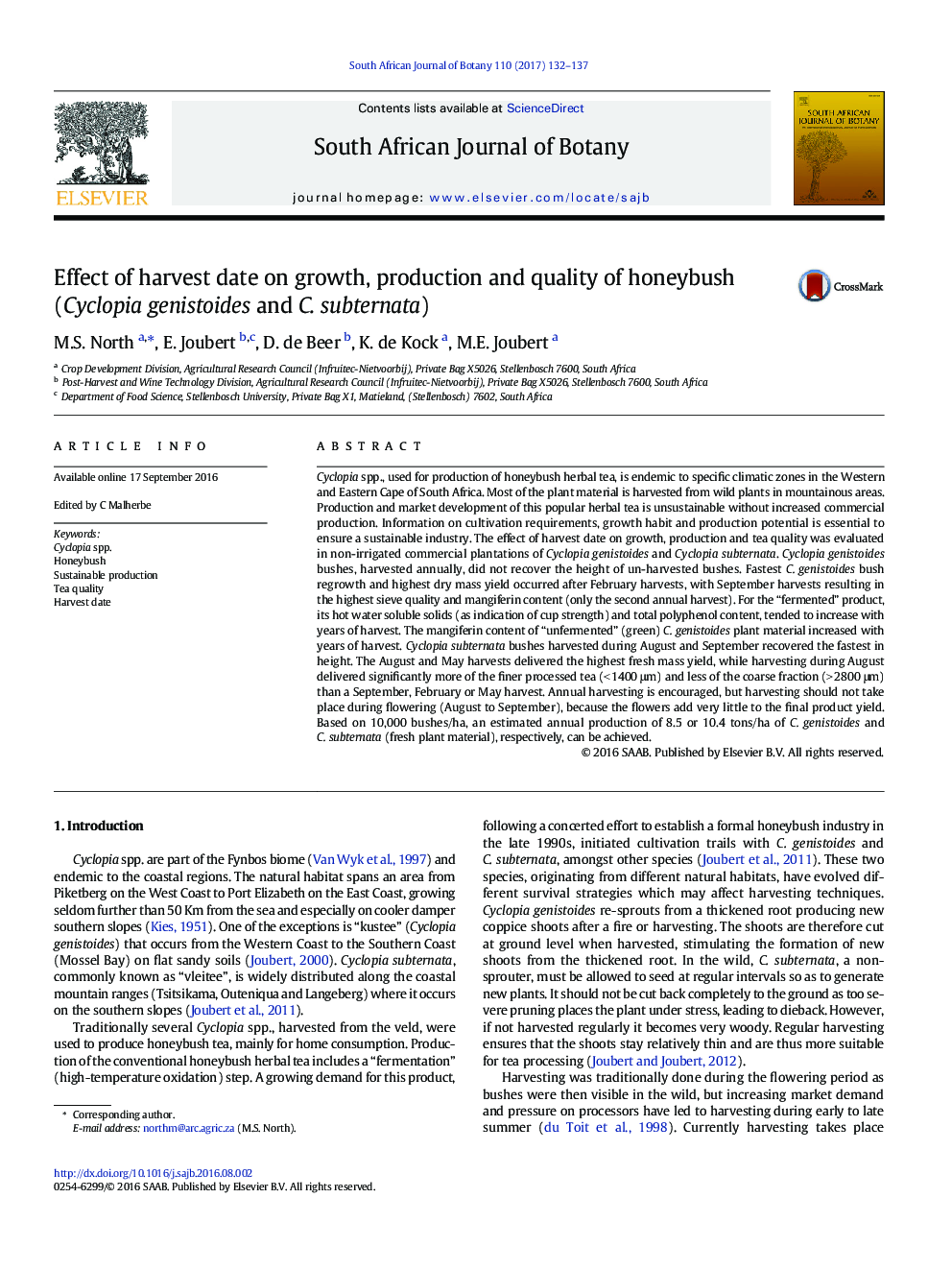| کد مقاله | کد نشریه | سال انتشار | مقاله انگلیسی | نسخه تمام متن |
|---|---|---|---|---|
| 5763006 | 1625148 | 2017 | 6 صفحه PDF | دانلود رایگان |

- Annual harvesting is sustainable for C. subternata and C. genistoides.
- Harvest date affected bush recovery, yield and tea quality.
- Species characteristics affect optimum harvest date.
- Optimum harvest date is a compromise between yield, quality and recovery.
Cyclopia spp., used for production of honeybush herbal tea, is endemic to specific climatic zones in the Western and Eastern Cape of South Africa. Most of the plant material is harvested from wild plants in mountainous areas. Production and market development of this popular herbal tea is unsustainable without increased commercial production. Information on cultivation requirements, growth habit and production potential is essential to ensure a sustainable industry. The effect of harvest date on growth, production and tea quality was evaluated in non-irrigated commercial plantations of Cyclopia genistoides and Cyclopia subternata. Cyclopia genistoides bushes, harvested annually, did not recover the height of un-harvested bushes. Fastest C. genistoides bush regrowth and highest dry mass yield occurred after February harvests, with September harvests resulting in the highest sieve quality and mangiferin content (only the second annual harvest). For the “fermented” product, its hot water soluble solids (as indication of cup strength) and total polyphenol content, tended to increase with years of harvest. The mangiferin content of “unfermented” (green) C. genistoides plant material increased with years of harvest. Cyclopia subternata bushes harvested during August and September recovered the fastest in height. The August and May harvests delivered the highest fresh mass yield, while harvesting during August delivered significantly more of the finer processed tea (< 1400 μm) and less of the coarse fraction (> 2800 μm) than a September, February or May harvest. Annual harvesting is encouraged, but harvesting should not take place during flowering (August to September), because the flowers add very little to the final product yield. Based on 10,000 bushes/ha, an estimated annual production of 8.5 or 10.4 tons/ha of C. genistoides and C. subternata (fresh plant material), respectively, can be achieved.
Journal: South African Journal of Botany - Volume 110, May 2017, Pages 132-137